|
Ref : 0835
An interesting violin of
|

go to Home Page see more Violins |
This violin has immediate visual appeal - it's an attractive instrument made of handsome materials, well made and in good condition. The two-piece back is of good maple of a straight medium curl and mild flame. The ribs deviate from the norm of wood matching the back and using the same wood for all the ribs sections all the way round, inasmuch as different unmatched pieces are used for different sections. This is itself has no tonal implications but points at the traditional giving way to the perfunctory and may have a bearing on the violin's authorship. The top is of excellent tone-spruce of fairly open grain, widening to the flanks. The neck and scroll are less flamed, the purfling somewhat ponderous, but the cornerwork is very neat.The label in this violin is a direct replica of a known André Conot label which has been replicated in the Dictionnaire Universel des Luthiers of René Vannes (label no 523). It has the same reference number and handwriting and there can be no doubt that the label in this violin is a replica of that label (The photos below show the label in this violin and compares it to the replicated Conot label in the Vannes publication). The practice of copying labels out of books and other publications and fitting them into instruments is an outrage aimed at misleading and deceiving and is invariably driven by a financial imperative. Which all means that this violin has manifestly nothing to do with André Conot.
In fact, very little in this violin recommends it as being of French authorship - maybe only the cornerwork in the back. But by and large the workmanship appears to be German, but may also be East European - not French and certainly not Conot. To use the words of Jason Price, Director of Tarisio, to describe such complex cases: the origin is 'unknowable'.
It should be mentioned that a repair has been done to a bass bar crack in this violin. In this case the repair makes use of a piece thin fabric glued across the entire inner surface of the violin's top, lining it from edge to edge. The use of fabric as a stabilizer instead of the traditional wooden cleats is highly unorthodox and the jury is still out on the pros and cons. But it's certain that more established violin makers shy away from the used of fabric for repairs, except in certain cases of repairs to ribs, particularly in cellos. In this case the violin has undergone superb French polishing which renders the crack almost invisible.
This violin remains well-toned - the very low arching no doubt contributes the nice strong sound. That aspect, combined with the violin's visual appeal, make it an attractive instrument and a worthwhile investment for a serious musician.
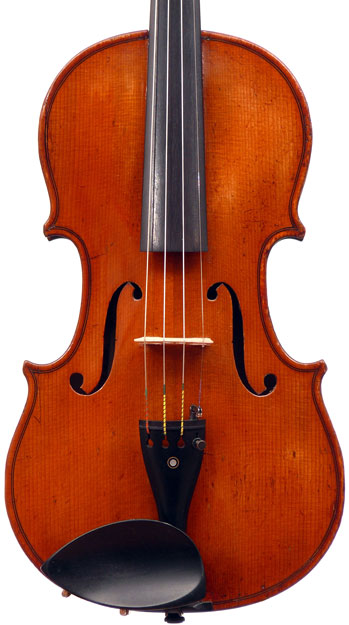 |
 |
 |
||
 |
Dimensions : Length of back: 35.8 cm
Condition : In very good condition. A repair to a bass bar crack was made using a lining of thin fabric across the inside of the top to stabelize the crack. This also covers a small crack to the edge of the upper left bout of the top, and to a minor crack running from the lower edge of the bass c-bout downwards for about 3 cm. All these repairs are stable. A crack to the bass flank of the pegbox is repaired with a graft the inside of the flank. It can be said that the violin is structurally stable.
A recent French polishing of the violin greatly enhances it's appeal and covers the repairs well.
Provenance : Withheld
Price : P.O.A.
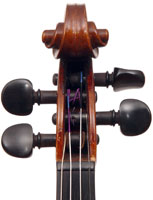 |
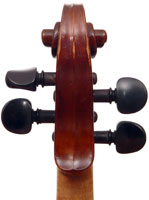 |
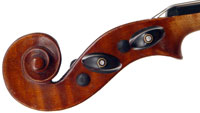 |
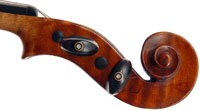 |
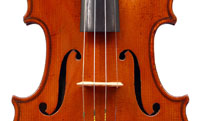 |
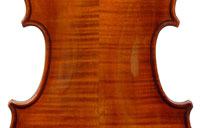 |
 |
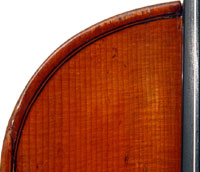 |
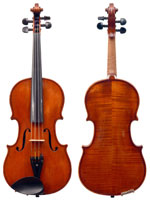 |
 |
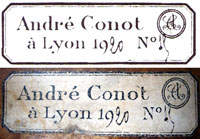 |
 |
|||||
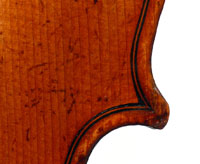 |
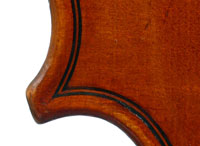 |
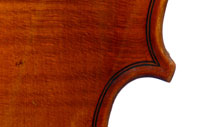 |